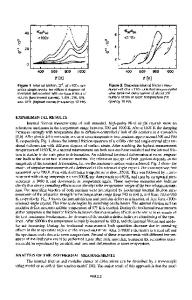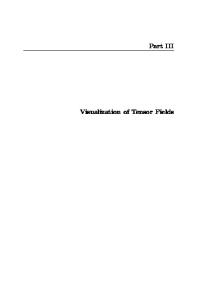Statistics of Internal Elastic Fields and Dislocation Density Tensor in Deformed FCC Crystals
- PDF / 228,748 Bytes
- 6 Pages / 612 x 792 pts (letter) Page_size
- 15 Downloads / 275 Views
1130-W12-11
Statistics of Internal Elastic Fields and Dislocation Density Tensor in Deformed FCC Crystals Jie Deng1, Anter El-Azab2 and B.C. Larson3 1 Mechanical Engineering Department, Florida State University, Tallahassee, FL 32310, USA 2 Scientific Computing Department, Florida State University, Tallahassee, FL 32306, USA 3 Materials Science and Technology Division, Oak Ridge Nat. Lab., Oak Ridge, TN 37831, USA ABSTRACT The statistics of internal elastic fields and dislocation density tensor associated with arbitrary 3D dislocation distributions have been modeled using probability density function and pair correlations. Numerical results for these quantities have been obtained for dislocation structures generated by the method of dislocation dynamics simulation. INTRODUCTION The evolution of dislocation systems in deformed crystals is affected by their internal elastic fields. In this regard, the statistics of these fields plays an important role [1-3]. A recently developed X-ray microscopy technique allows the measurement of elastic strain (stress) and lattice rotation at the sub-micrometer length scale in deformed single crystals [4-6]. This capability makes the direct comparison between computer simulation and experimental investigation possible. In preparation for the task of comparing predictions with experimental measurements, it is important to be able to calculate the internal elastic fields of dislocations and develop the statistical tools to understand their distributions. Here we use probability density function and pair correlation function to describe the statistics of internal elastic fields for 3D dislocation systems in crystals. Since the elastic strain and lattice rotation fields are directly related to the dislocation density tensor, the statistical properties of the latter have also been analyzed. The numerical results of these statistical measures are obtained for dislocation systems generated by the method of dislocation dynamics simulation [7]. THEORETICAL MODELING The internal fields β (such as stress σ , elastic strain ε , or lattice rotation ω ) of dislocations in a finite crystal volume can be obtained by superposition of two parts, the first part β ∞ ( σ ∞ , ε ∞ or ω ∞ ) comes from the classic line-integral form of elastic solution of dislocations inside an infinitely-extended medium [8], and the second part is a corrective contribution called image field β img ( σ img , ε img or ω img ). The latter contribution either represents a true image field due to the crystal boundary or it captures the field, within a finite crystal volume, of dislocations residing outside this volume. The image elastic fields can be obtained by solving the traction boundary value problem (BVP)
∇ ⋅ σ img (r ) + ∇ ⋅ σ ∞ (r ) = 0,
with the boundary condition: σ img (r )n(r ) = −σ ∞ (r )n(r ) ,
(1)
where n(r) is the outward unit normal to the boundary. According to the continuum theory of dislocations [9], the elastic strain and lattice rotation fields completely determine the dislocation density tensor α in
Data Loading...









